The Ultimate Guide to Farmhouse Sinks
Welcome to Farmhouse Sink 101
If you’re dreaming of that perfect blend of charm and function in your kitchen, a farmhouse sink may just be your ideal match. In this comprehensive guide, we’ll walk you through everything you need to know about farmhouse sinks—what they are, why people love them, how to choose the right one, and what to expect from installation to care. Whether you’re a DIY enthusiast or just sink-curious, consider this your syllabus for Farmhouse Sink Fundamentals.
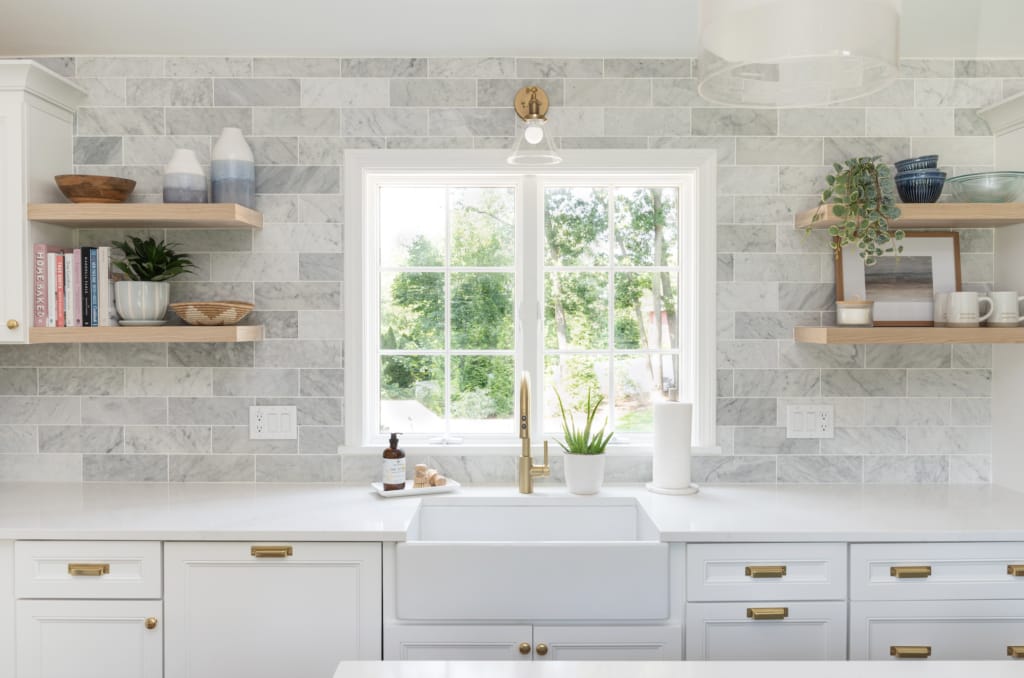
Table of Contents
- What Is a Farmhouse Sink?
- Farmhouse vs. Apron-Front Sinks: What’s the Difference?
- Types of Farmhouse Sink Materials
- How to Choose the Right Size
- Best Farmhouse Sinks by Kitchen Style
- Installation Basics & What to Know
- Budget-Friendly Options That Don’t Compromise on Style
- Pros and Cons to Consider
- FAQs About Farmhouse Sinks
- Sinkology Favorites: Top Picks from Our Collection
1. What Is a Farmhouse Sink?
Farmhouse sinks, also known as apron-front sinks, are defined by their deep basins and forward-facing exposed front panel. Traditionally found in old-world farmhouses (hence the name), these sinks were designed for heavy-duty use—and their design has stood the test of time.
Today, farmhouse sinks are a standout feature in kitchens, blending seamlessly into rustic, modern, and industrial designs alike.
Key Features:
- Deep, wide basins for large pots and pans
- Exposed apron front
- Often installed as undermount or flush with countertops
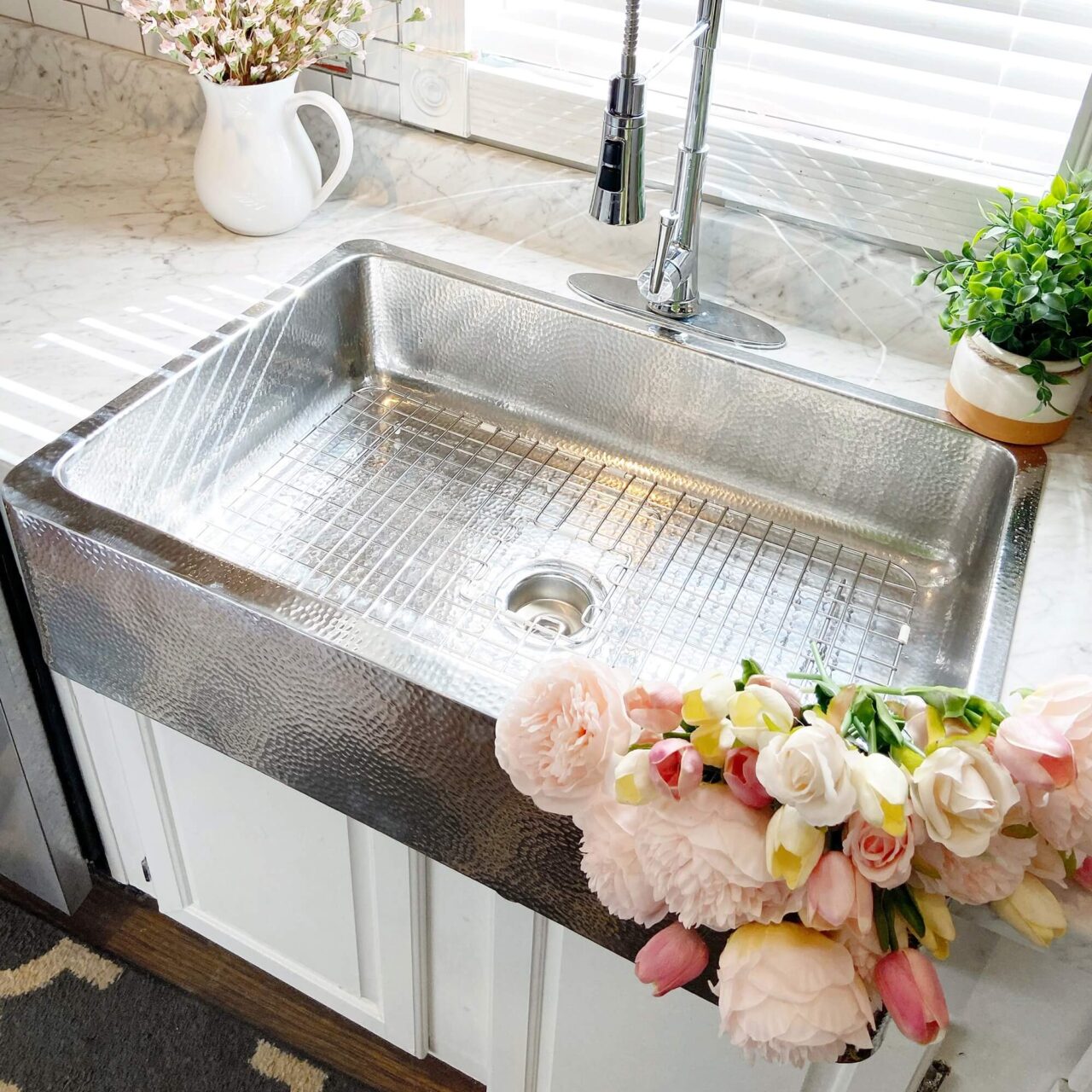
2. Farmhouse vs. Apron-Front Sinks: What’s the Difference?
Spoiler: They’re often the same thing. But here’s a quick breakdown:
- Farmhouse Sink: A general term referring to the classic, deep, exposed-front design.
- Apron-Front Sink: Refers specifically to the installation style with the front panel exposed.
So while all apron-front sinks can be farmhouse sinks, not all farmhouse sinks are technically apron-front—some newer designs offer a “short apron” style that works with existing cabinetry like our Quick-Fit® drop-in sinks or the Turner.
3. Types of Farmhouse Sink Materials
Farmhouse sinks now come in a wide variety of materials to suit different needs, aesthetics, and budgets:
- Fireclay: Extremely durable, non-porous, and resistant to heat, scratches, and stains. Features a glossy finish and timeless style.
- Copper: Naturally antimicrobial with a living finish that develops unique patina over time. Hand-hammered designs offer warmth and character.
- Stainless Steel: Sleek, modern, and low-maintenance. Great for industrial-style kitchens and known for resilience and ease of cleaning.
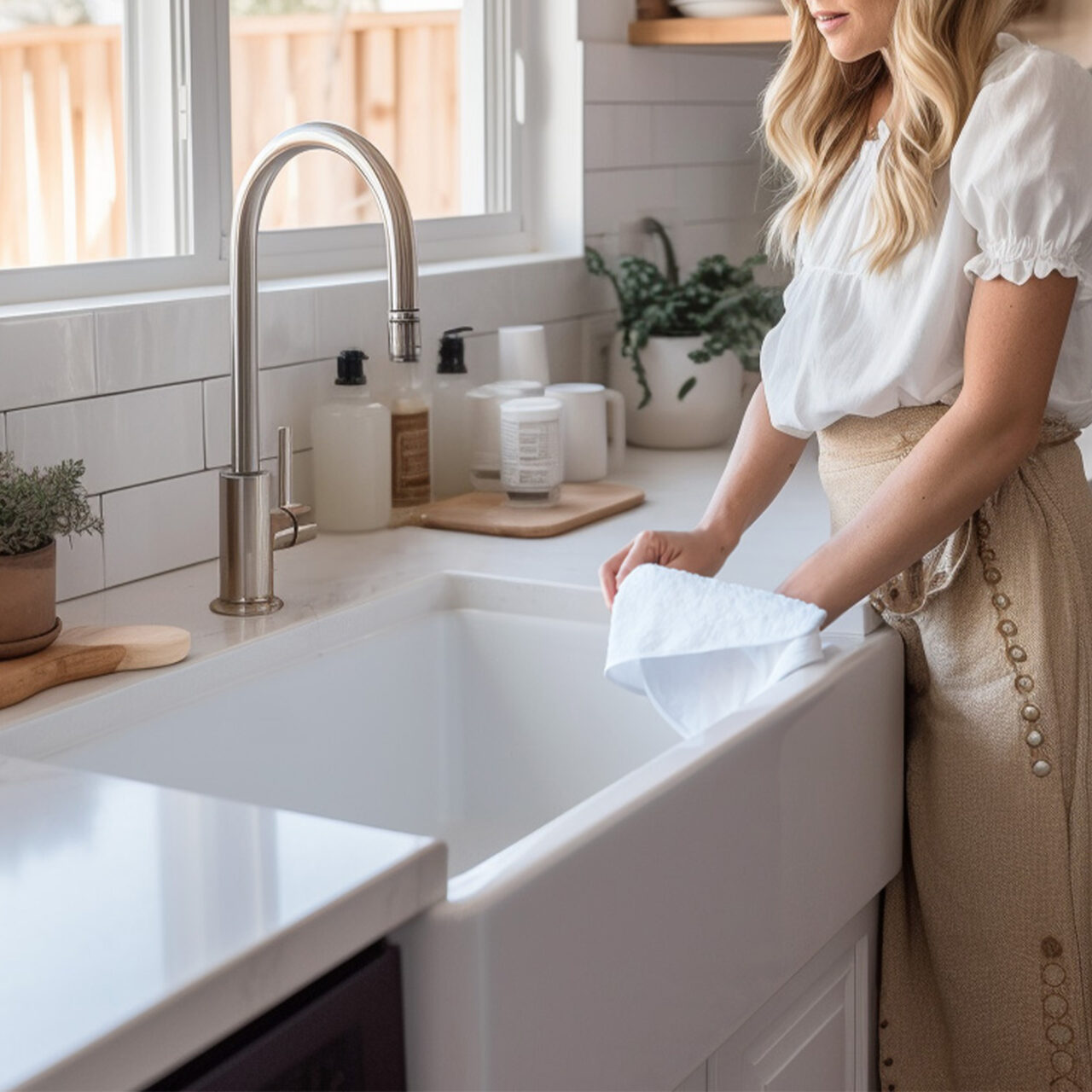
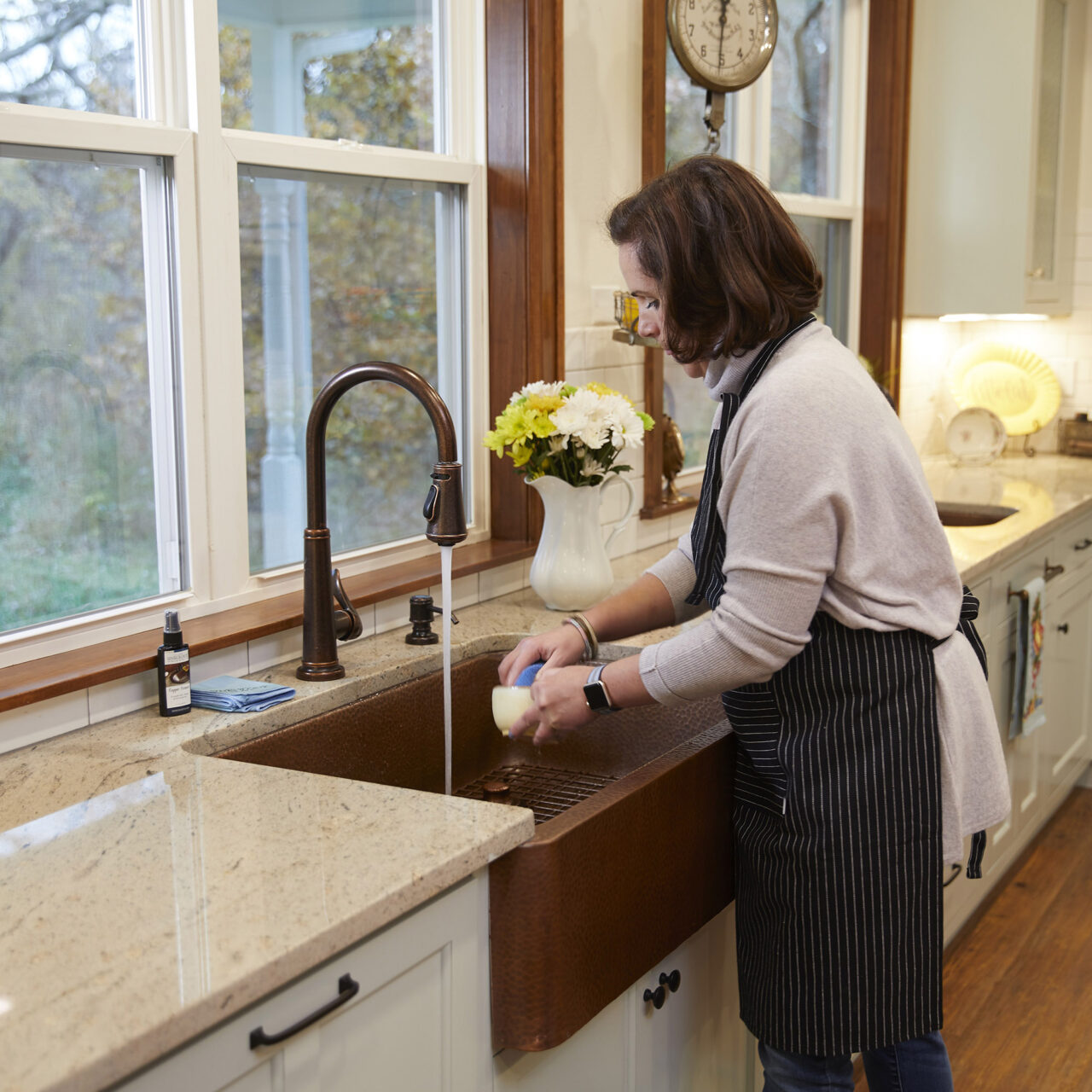
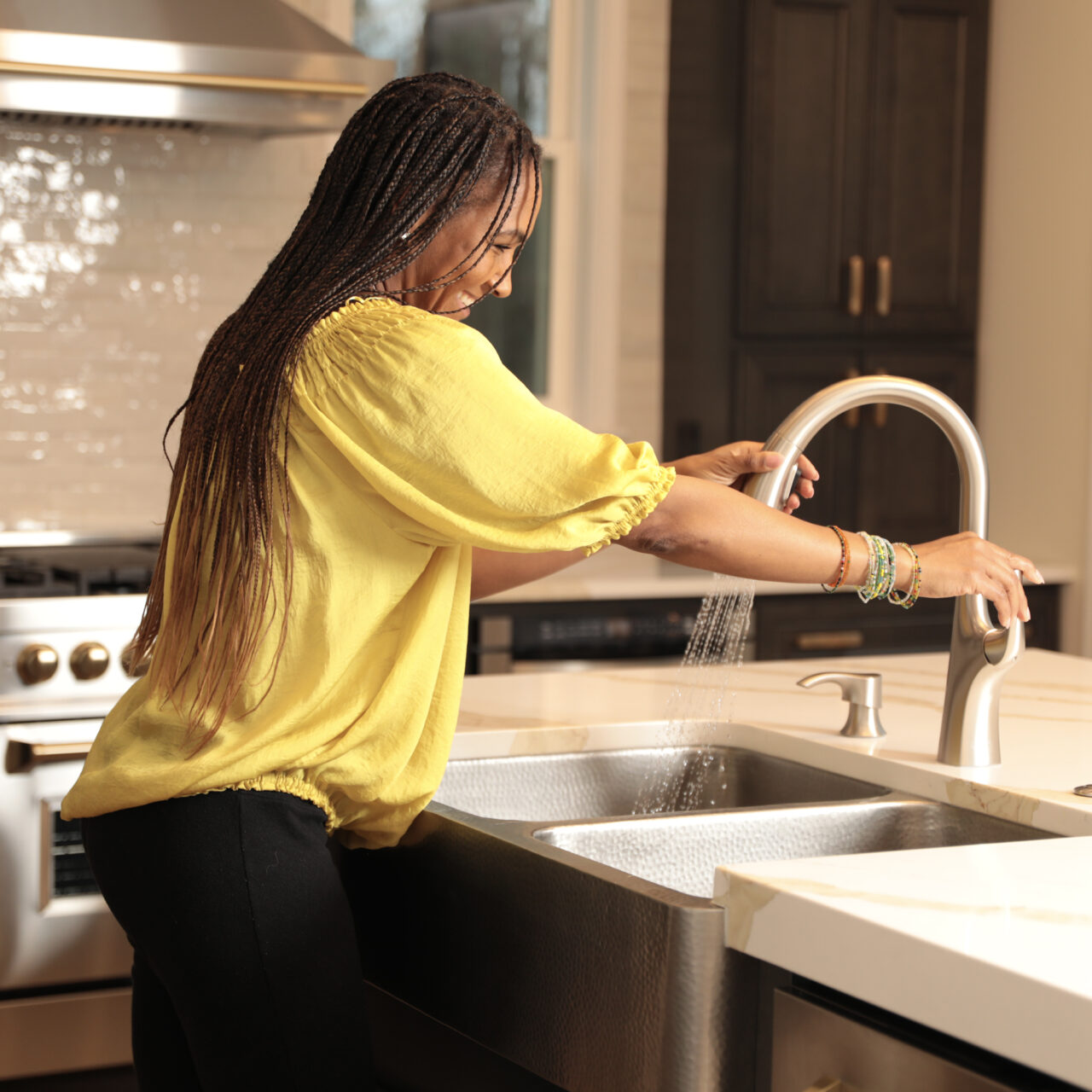
- Granite Composite: Made from crushed stone and resin, offering durability, matte finish, and resistance to heat and scratching. Available in a variety of neutral tones.
- Natural Stone (Granite or Marble): Luxurious and unique, but heavier and requires more maintenance. Best installed by professionals.
- Nickel: Offers a high-end look with reflective surfaces and a soft metallic hue. Less common, but ideal for upscale designs.

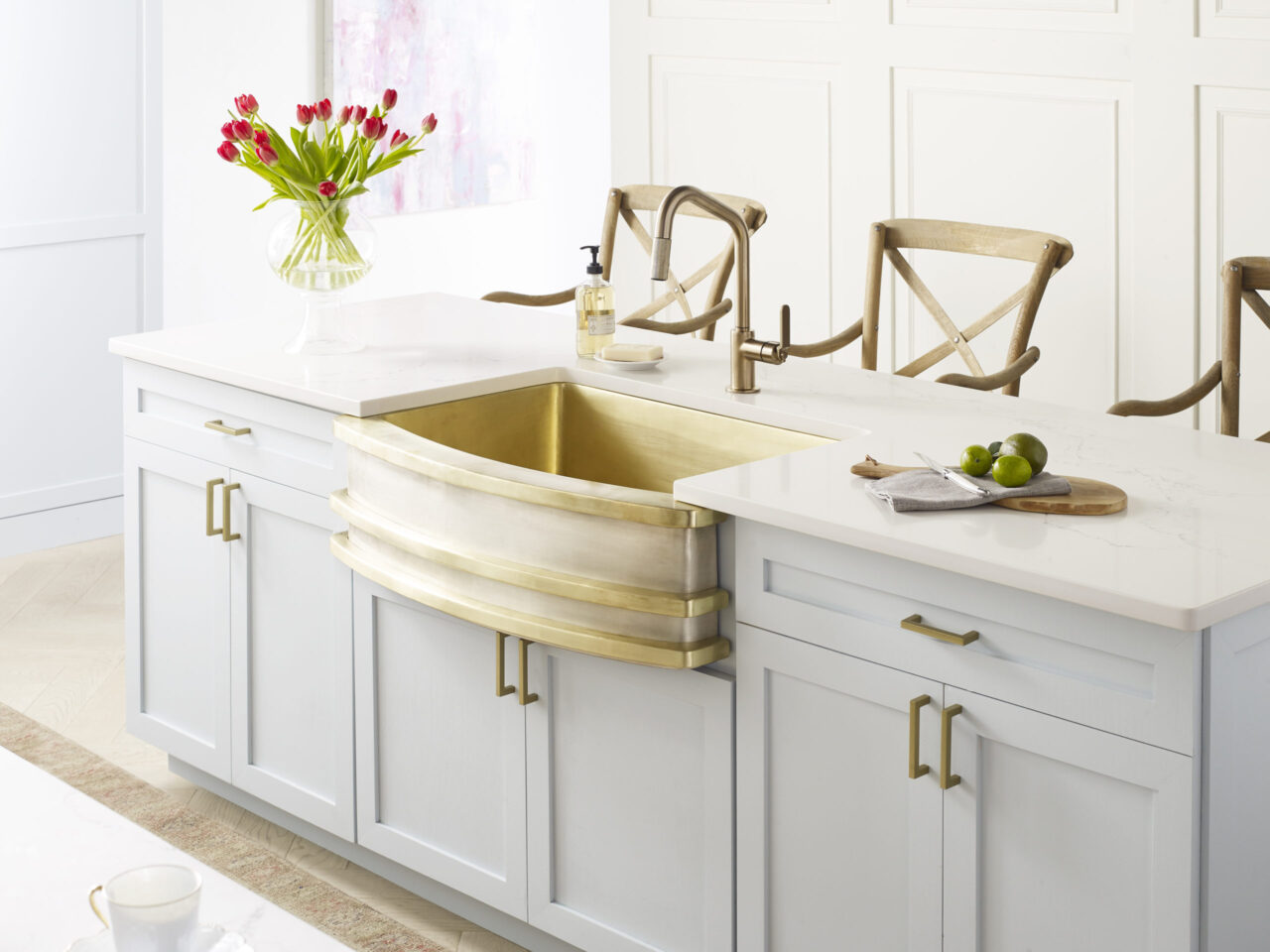
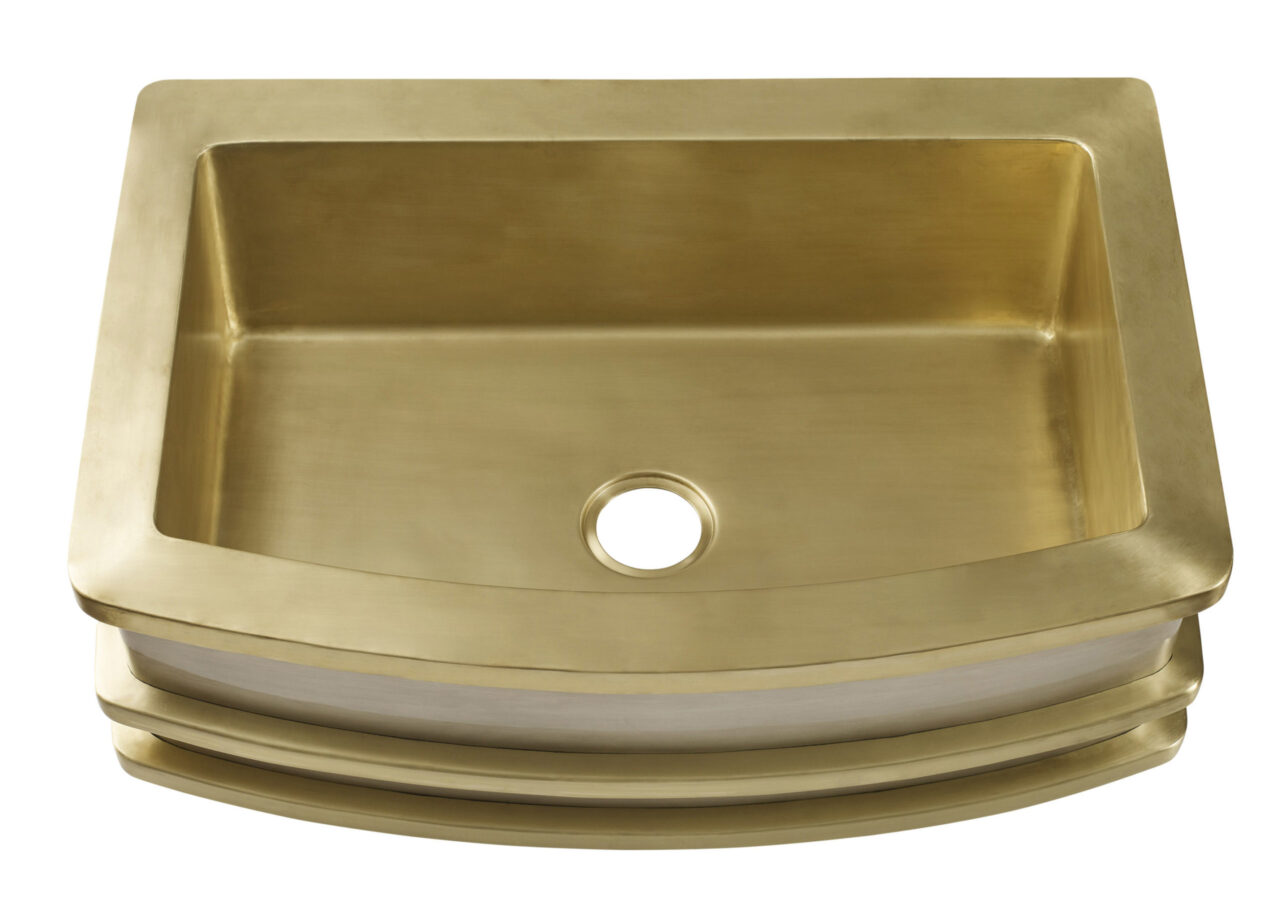
- Porcelain: A more budget-friendly alternative to fireclay, with a similar look. Slightly more prone to chipping or staining.
- Cast Iron with Enamel Coating: Heavy and traditional, with a glossy enamel surface. Requires strong cabinet support but offers classic charm.
4. How to Choose the Right Size
When selecting a farmhouse sink, size matters—both in style and functionality.
Common Sizes:
- 30”–33”: Standard single-bowl sizes
- 36”+: Ideal for larger kitchens or double-bowl sinks
Things to Consider:
- Base cabinet size (must fit the sink depth and width)
- Countertop space – Kitchen usage habits (frequent cooking vs. occasional use)
Tip: A 33” sink typically fits in a 36” cabinet.
5. Best Farmhouse Sinks by Kitchen Style
Sinkology farmhouse sinks are crafted to fit every design palette. Here’s a quick pairing guide:
- Modern Farmhouse: White fireclay with gold or matte black faucet
- Rustic: Hand-hammered copper with bronze hardware
- Industrial: Stainless steel with brushed nickel accents
- Coastal: Fireclay with polished nickel or chrome fixtures
- Traditional: Porcelain or cast iron with cross-handle faucets
- Contemporary: Granite composite in matte black or gray with minimalist fixtures
6. Installation Basics & What to Know
Installing a farmhouse sink is more involved than a standard sink swap. Let’s break it down by mounting style:
Undermount Farmhouse Sinks
- Installed beneath the countertop for a seamless look.
Allows for different reveals: zero, positive, or negative. - Recommended for new cabinets and countertop installations.
- Requires custom cabinetry and strong support structure.
- For large fireclay options, add additional reinforcement or use Sinkology’s LevelUp™ Support Kit with adjustable heavy-duty brackets.
- Typically best installed by a professional.
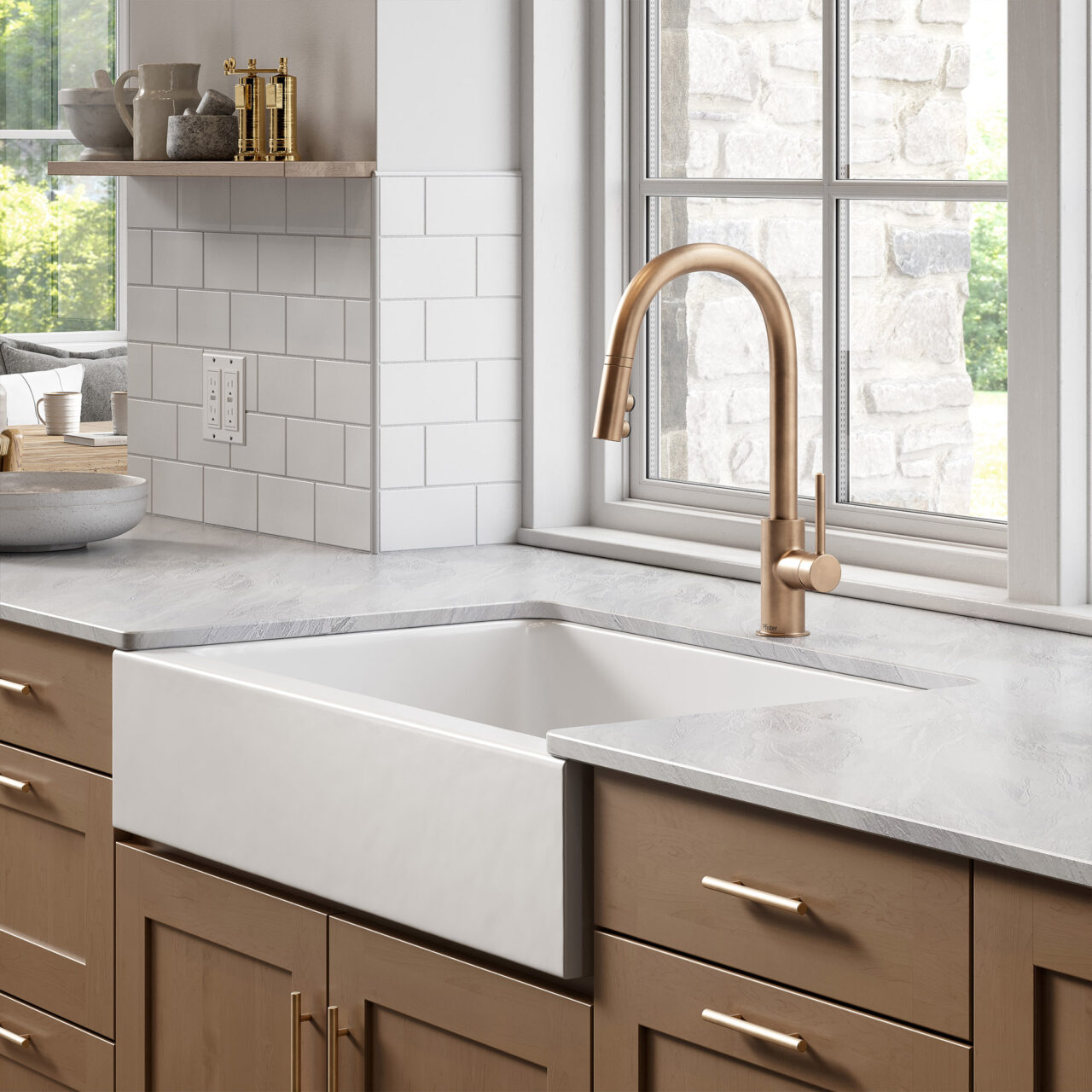
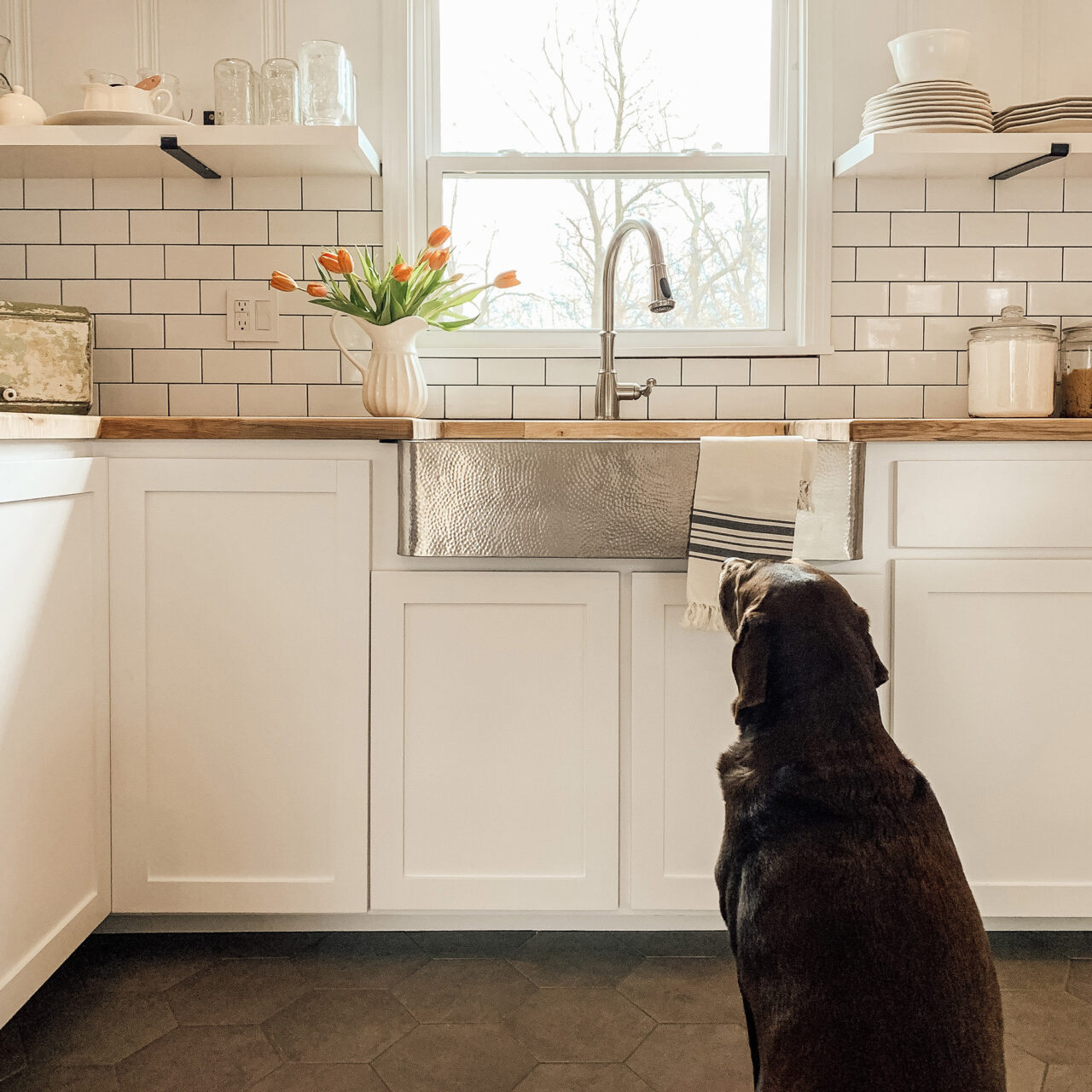
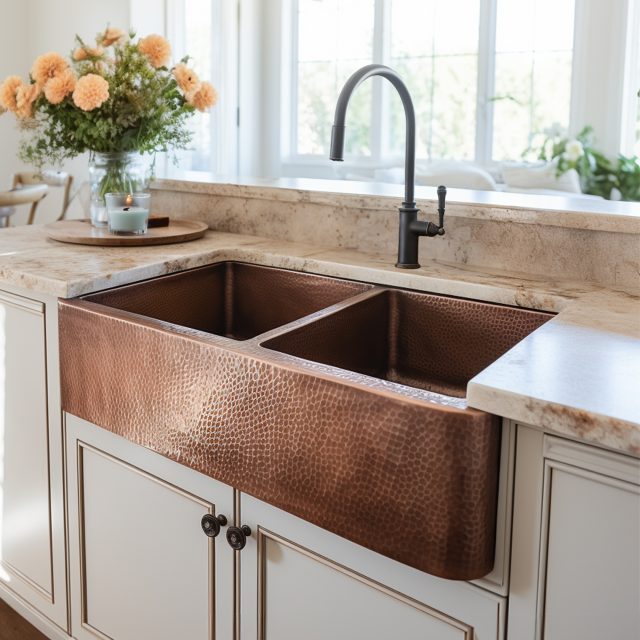
Drop-In Farmhouse Sinks
- Rim sits on top of the counter for easier installation.
- Great option for retrofits using existing cabinets and countertops.
- Requires a cutout in the counter and cabinet modifications to accommodate apron front.
Quick-Fit® Drop-In Sinks by Sinkology
- Engineered for easy DIY installation with minimal modifications.
- Designed to work with existing cabinets and countertop.
- Perfect for weekend DIYers—no need to replace countertops.
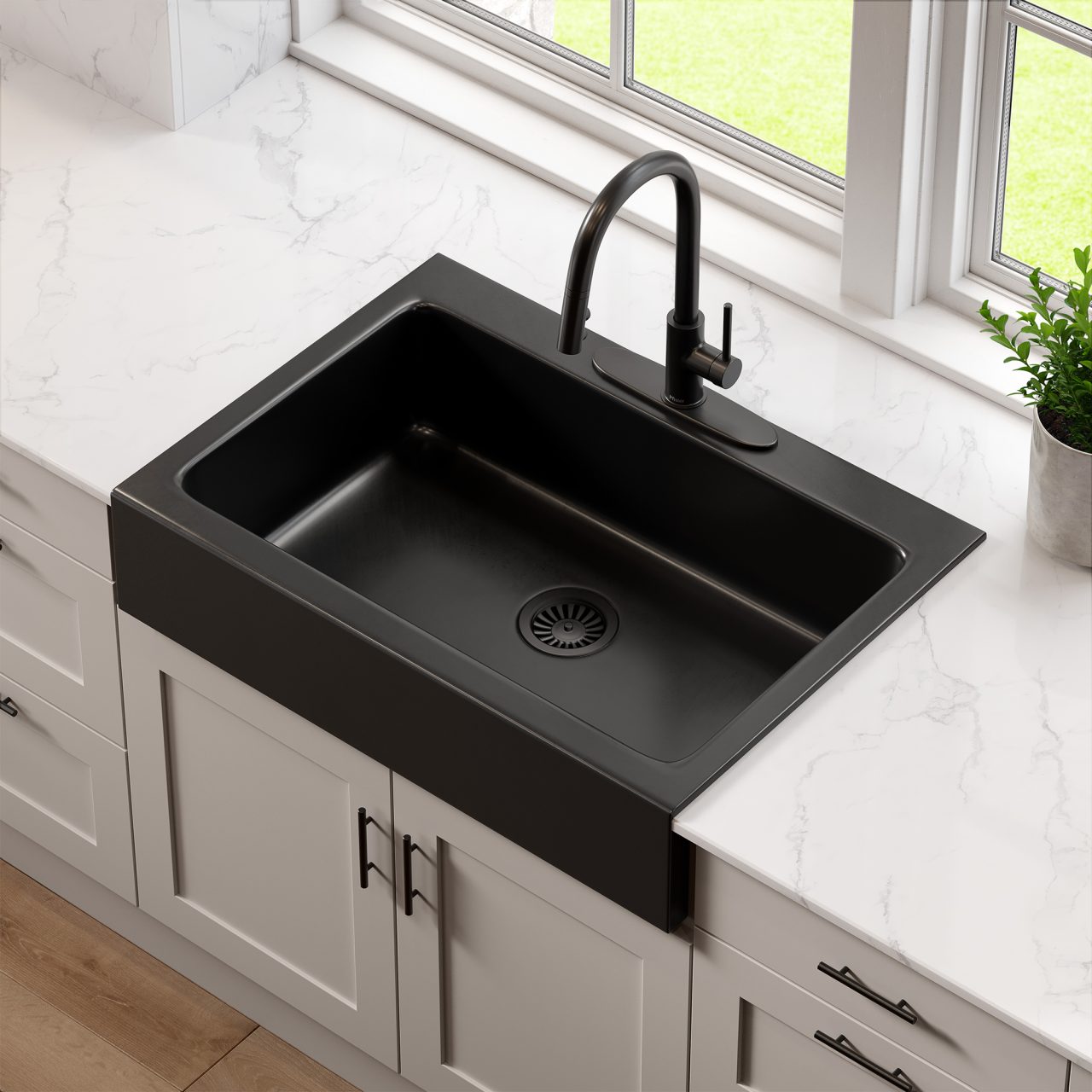
7. Budget-Friendly Options That Don’t Compromise on Style
Farmhouse sinks don’t have to break the bank. Sinkology’s All-in-One Kits offer everything you need in one curated package:
- A high-quality farmhouse sink
- Pfister® faucet
- Matching drain and accessories
Example: The Josephine 34” Quick-Fit® Drop-In Kit—one box, one weekend, one stunning upgrade.
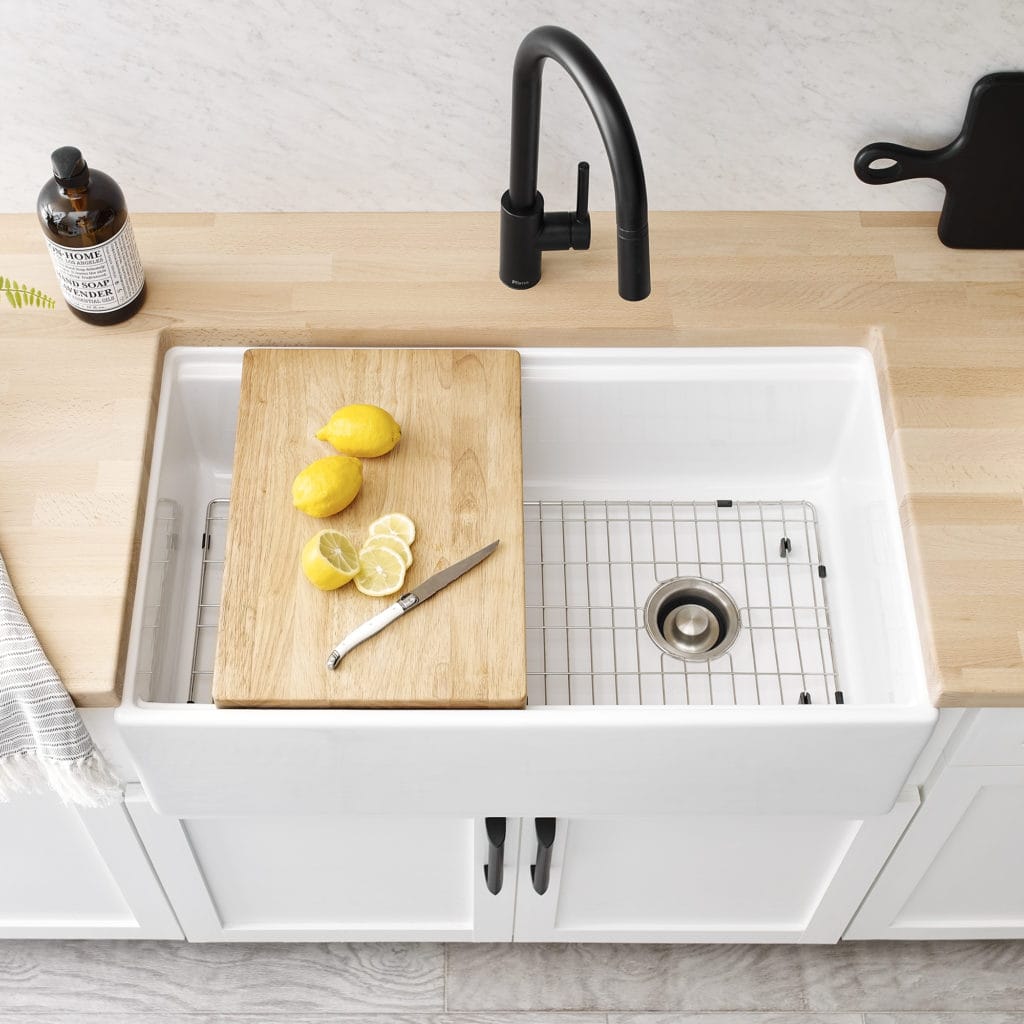
Workstation Farmhouse Sinks
- A rising trend combining beauty and utility.
- Includes accessories like cutting boards, drying racks, colanders, bottom grids, and sink trays.
- Transforms your sink into a multitasking hub perfect for meal prep and cleanup.
- Ideal for smaller kitchens or those looking to maximize every inch.
8. Pro and Cons to Consider
Pros:
- Timeless, eye-catching design adds instant character
- Deep basin accommodates oversized pots and pans
- Versatile materials to match any aesthetic
- Improved kitchen functionality
- Resale appeal and perceived value boost
Cons:
- Heavier than standard sinks, may require structural cabinet support
- Installation can be more complex and costly
- Apron front may show water spots or patina depending on material
- Requires thoughtful pairing with cabinets and countertops
9. FAQs About Farmhouse Sinks
Q: What’s the difference between a farmhouse and apron-front sink?
A: Farmhouse sinks describe the function and aesthetic; apron-front refers to the exposed front installation style. Most farmhouse sinks are apron-front.
Q: Can I install a farmhouse sink in existing cabinets?
A: Yes—especially with Sinkology’s Quick-Fit® line. For standard undermount sinks, we recommend custom cabinetry and new solid surface countertop.
Q: What size farmhouse sink works with a 36-inch cabinet?
A: Most 33” sinks fit comfortably. Always double-check base cabinet dimensions.
Q: How much should a farmhouse sink stick out?
A: Generally 1” to 2” beyond the counter, but preferences vary.
Q: What are the best materials for farmhouse sinks?
A: Fireclay and copper are durable and timeless; granite composite and stainless steel are more modern.
Q: Are farmhouse sinks harder to maintain?
A: Not if properly cared for. Use the right cleaning products (like Sinkology Care IQ® Kits) specific to the material.
Q: Do farmhouse sinks work in small kitchens?
A: Yes! Look for compact models or Quick-Fit® designs that maximize space.
Q: Are there eco-friendly farmhouse sink options?
A: Copper and fireclay are both natural materials with long lifespans. Stainless steel is often recyclable.
Q: What faucet styles pair well with farmhouse sinks?
A: Bridge faucets, pull-down sprayers, and industrial goosenecks are all popular.
Q: Should I hire a pro or DIY the installation?
A: Quick-Fit® or drop-in styles are DIY-friendly. Undermounts and large fireclay options are best left to pros.
10. Sinkology Favorites: Top Picks from Our Collections
- The Josephine Fireclay Sink: Quick-Fit® DIY ready, timeless and elegant.
- The Adams Copper Sink: A customer-favorite with hand-hammered texture.
- The Lange Stainless Farmhouse Sink: Sleek and modern for any aesthetic.
Explore the full lineup of Farmhouse Kitchen Sinks by Sinkology.
Ready to Graduate?
Consider this your diploma in farmhouse sink fundamentals. Whether you’re starting a renovation or just soaking up design inspiration, the School of Sinkology has your back.
If you have any additional questions during your search for the perfect copper, fireclay farmhouse sink or crafted stainless steel sink, our Sinkologists™ are here to help. Contact us or follow us on Facebook, Houzz, Pinterest, Instagram, or TikTok for more helpful tips and design ideas.